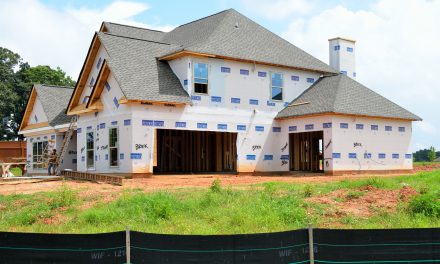Keeping rental assistance programs churning amid the recession hangover requires California to fuel up on federal funding.
But now, the state is running empty.
For the past 12 months, California’s rent relief program — Housing Is Key — has accepted applications from tenants unable to make rent payments and from landlords submitting applications on their behalf. As of March 31, 2022, the window to apply for rental assistance in California has closed, though many applications are still in the pipeline, awaiting a decision on rent relief.
Related article:
As housing aid dwindles, California landlords have one last chance to apply for aid
On June 28, 2021, the state passed Assembly Bill (AB) 832, which saw:
- $5.2 billion in federal funds allocated for the state’s rent relief program; and
- tenants and landlords able to receive 100% of the back rent due to them.
However, the reality has fallen far short of the goal. As of March 2022, the statewide rent relief program has:
- received $7.1 billion in requests for funds; and
- allocated $2.5 billion in rent relief, paying on average $11,443 per household, according to Housing Is Key’s interactive dashboard.
To bridge the deficit between amounts received from the federal government and amounts requested from California tenants and landlords, the California Department of Housing and Community Development (HCD) formally requested an additional $1.9 billion from the U.S. Treasury.
The Treasury responded by granting the state just $62 million — far below what is needed, according to the HCD. The U.S. Treasury also released $136 million in its second round of emergency rental assistance (ERA), according to the U.S. Treasury.
These additional funds are a drop in the bucket compared to what the state’s tenants need to remain in their homes. Worse, what little funds are left may be at the mercy of fraudsters attempting to access what they view as a free lunch.
Related article:
Fraudulent claims for emergency rental assistance
Although the funds have fallen short, of the tenants who have been successful at receiving ERA, more than 84% are very low- or extremely low-income households, earning less than 50% of their area’s median income, according to the HCD.
While the state is working to distribute ERA funds to these tenants at greatest risk of eviction, tenants who have applied for ERA on or before the March 31, 2022 deadline may stave off eviction while their ERA decision is pending.
Related article:
COVID-19 eviction noticing rules extended for ERA applicants
In contrast, there’s the risk that some of the relief money will go towards paying out fraudulent claims.
The CEO of a risk solutions firm estimates 25% to 30% of claims for rent relief are filed fraudulently by individuals using personal identifiable information to pretend they are a tenant, according to ABC News.
In one case, a homeowner in Alameda County received a letter from the state addressed to someone who claimed to be renting his home, despite not being a landlord or owning any rental properties.
Officially, the state reports a much more conservative estimate of ERA fraud cases in California: 1,800 fraudulent rental assistance applications identified out of 500,000 statewide, or less than 1%, according to the HCD, as reported by ABC News.
Of course, there’s no way to know whether those identified cases represent the whole or if more are slipping through the cracks in the state’s investigations.
For example, in 2021, two California residents from Tulare County were arrested for attempting to defraud the rent relief program. The couple was charged with forgery and fraudulent personation, according to NBC news.
The HCD is confident fraud claims are under control, unlike at the beginning of the pandemic when unemployment fraud claims made up nearly 10% of all unemployment claims, according to the California Employment Development Department.
But the underpinnings of these two programs were much different, as states scrambled to distribute unemployment benefits during the 2020 recession. With so little time to prepare, fraud screening measures were not fully implemented.
That scramble was not so prevalent with the state rental relief program, which had months to prepare and continues to act slowly in approving applicants and distributing its funds, while also using greater security measures the state learned to be vital through its handling of unemployment benefits.
The pandemic and 2020 recession have been tough teaches, but it appears, at least from the state’s perspective, that it’s gotten ahold of fraud claims surrounding its rent relief program.
Now, it’s just a matter of getting ahold of funds.
Related article:
Rental Housing Recovery Act extends eviction moratorium through end of September 2021



















I know of someone that has not only fraudulently collected unemployment and now collecting renters relief fraudulently claiming he cannot pay his rent but his rent has been paid by his mother and he has went as far as forging documents to file as a landlord but is only a renter and has collected $30.000 in rent relief…how can he be reported??
It would be lovely if the state cared, because I am that same situation and trying right now to not get evicted. I did nothing for this. The last owner of this building sold the building without telling us, and took our rents with him. I have been spending all of 2022 trying to find just one agency which will do their job and INVESTIGATE THIS FRAUD because it was HUGE and not only MY rent relief, but a LOT Of us here in this palce
Really jerry